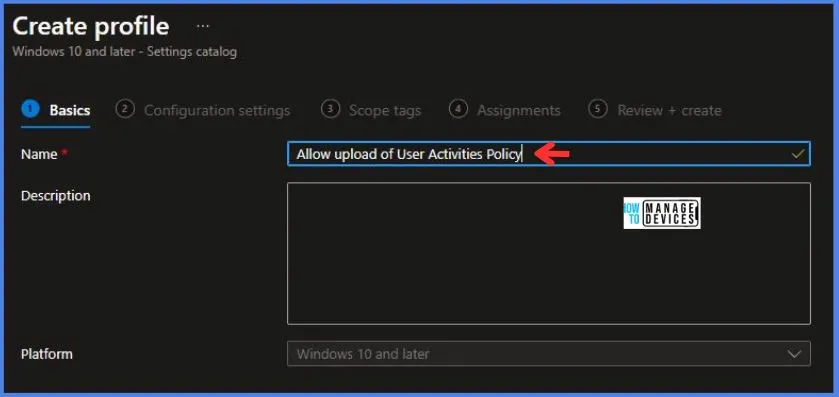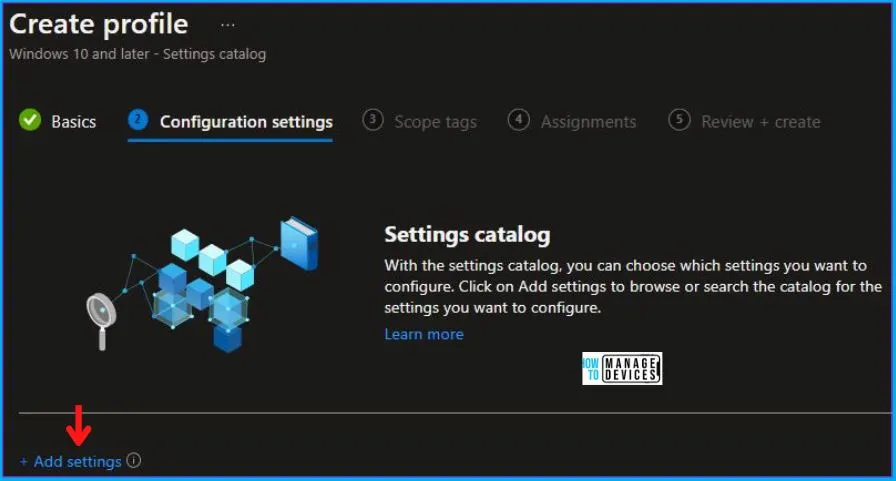This post will explore how to Allow Upload of User Activities Policy using Intune. We will check how to apply this policy using Intune’s Configuration Profiles. This post’s main aspect is getting familiar and hands-on experience in configuring and setting the Allow Upload of User Activities Policy using Intune.
Allow Upload of User Activities Policy configuration dictates whether User Activities that have been published can be transferred to the cloud. It helps in enabling or disabling the transmission of published ‘User Activities’ to be uploaded to the ActivityFeed.
This policy setting is responsible for establishing whether User Activities that have been made public or shared can be synchronized and stored in a cloud-based environment. It governs the decision regarding whether these activities are eligible for transmission to an online storage location or platform.
In light of privacy considerations, it’s essential to refrain from transmitting data to any third-party entities, as this data may potentially include sensitive information. Uploading User Activity type events to the cloud is prohibited, which will result in the Timeline feature not functioning across various devices.

- Turn Off Cloud Consumer Account State Content Policy using Intune
- Configure Offer Remote Assistance Policy using Intune
Windows CSP Details UploadUserActivities
We will see Windows CSP Details for this Policy setting UploadUserActivities. This policy directive plays a pivotal role in deciding whether User Activities that have been shared or made accessible to others can be securely and remotely stored in a cloud-based repository. It’s the key determinant in assessing whether these specific activities can be transmitted to and maintained in an online, cloud-centric storage solution. Essentially, it governs the rules and permissions associated with cloud storage for User Activities.
CSP URI – ./Device/Vendor/MSFT/Policy/Config/Privacy/UploadUserActivities

Allow Upload of User Activities Policy using Intune
To set the Allow Upload of User Activities Policy Using Intune, follow the steps stated below:
- Sign in to the Intune Admin Center portal https://intune.microsoft.com/.
- Select Devices > Windows > Configuration profiles > Create a profile.
In Create Profile, Select Windows 10 and later in Platform, and Select Profile Type as Settings catalog. Click on the Create button.
| Platform | Profile Type |
|---|---|
| Windows 10 and later | Settings Catalog |

On the Basics tab pane, provide a name for the policy as “Allow Upload of User Activities Policy.” Optionally, you can enter a policy description and proceed by selecting “Next.“

Now in Configuration Settings, click Add Settings to browse or search the catalog for the settings you want to configure.

In the Settings Picker windows, search by the keyword User Activities, you’ll get the category Privacy, and select this.
When you select the option stated above, you will see one option: Upload User Activities. After selecting your setting, click the cross mark at the right-hand corner, as shown below in the image.

In the Administrative Templates, we now have to set Upload User Activities to Disabled.

Using Scope tags, you can assign a tag to filter the profile to specific IT groups. One can add scope tags (if required) and click Next to continue. Now in Assignments, in Included Groups, you need to click on Add Groups, choose Select Groups to include one or more groups, and click Next to continue.

In the Review + Create tab, you need to review your settings. After clicking on Create, your changes are saved, and the profile is assigned.

Upon successfully creating the “Allow Upload of User Activities Policy,” notification will appear in the top right-hand corner, confirming the action. You can also verify the policy’s existence by navigating to the Configuration Profiles list, where it will be prominently displayed.
Your groups will receive your profile settings when the devices check in with the Intune service. The Policy applies to the device.
Intune Report for Allow Upload of User Activities Policy
From Intune Portal, you can view the Intune settings catalog profile report, which provides an overview of device configuration policies and deployment status.
To monitor the implementation of the policy, you must choose the appropriate policy from the Configuration Profiles list. Here I choose Set the Default Behavior for AutoRun Policy from the list. By examining the status of device and user check-ins, you can ascertain the successful application of the policy. If you need more comprehensive details, you can click the “View Report” option to access supplementary insights. As you can see, it is successfully implemented on the targeted device.

Registry-Key Verification for UploadUserActivities
To access the registry settings that hold the group policy configurations on a specific computer, you can execute “REGEDIT.exe” on the target computer and navigate to the precise registry path mentioned below where these settings are stored.
- Computer\HKEY_LOCAL_MACHINE\SOFTWARE\Microsoft\PolicyManager\providers\5B88AEF1-09E8-43BB-B144-7254ACBBDFF3E\default\Device\Privacy
When you navigate the above path in the Registry Editor, you will find the registry key UploadUserActivities. Refer to the table and image below.
| Registry Name | Data |
|---|---|
| UploadUserActivities | Disabled |

As you can confirm from the above image, the Registry key has been created, and we can confirm that the policy has been implemented on the target device successfully.
We are on WhatsApp. To get the latest step-by-step guides and news updates, Join our Channel. Click here – HTMD WhatsApp.
Author
Abhinav Rana is working as an SCCM Admin. He loves to help the community by sharing his knowledge. He is a B.Tech graduate in Information Technology.
